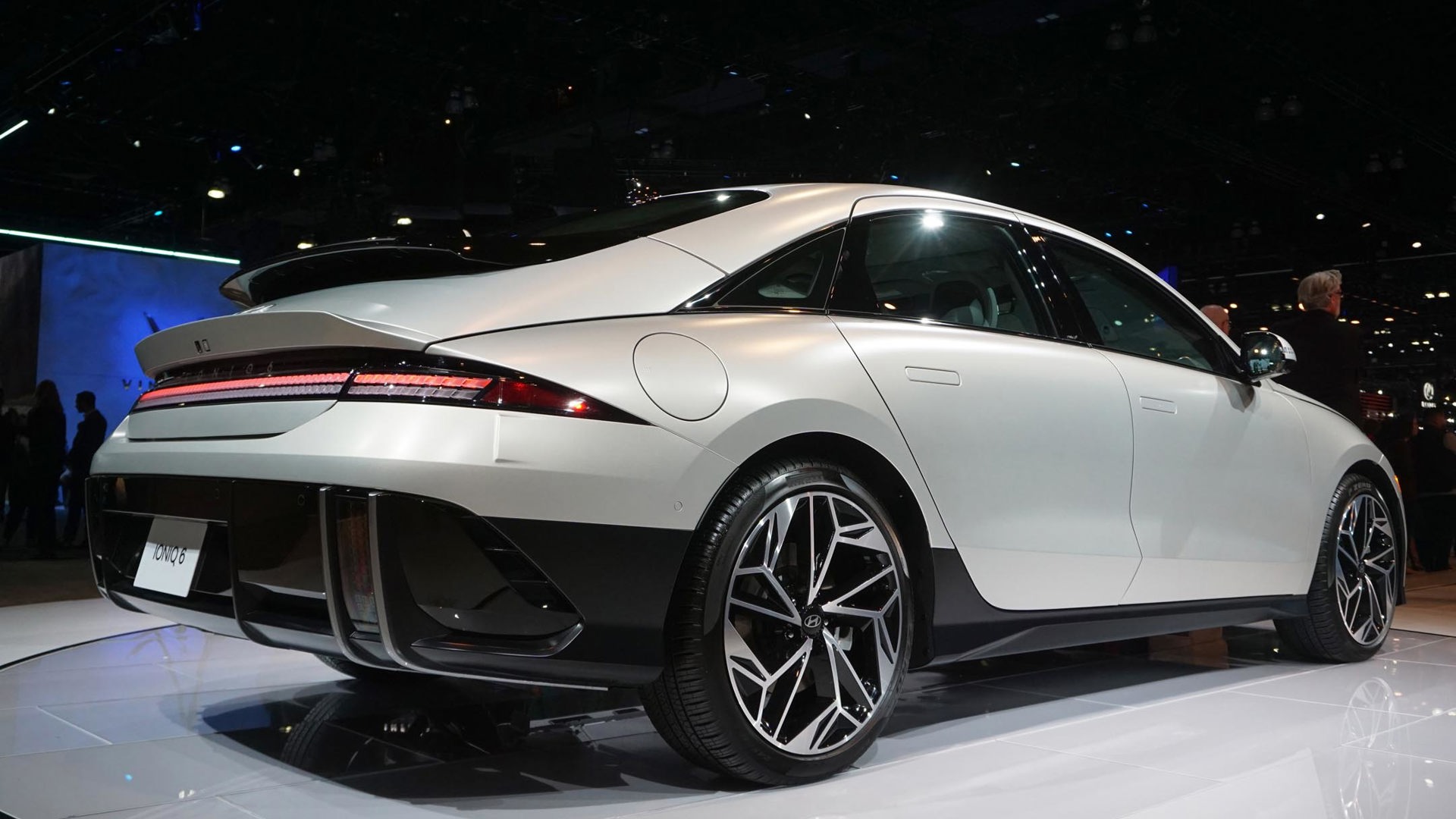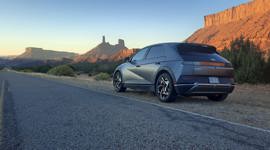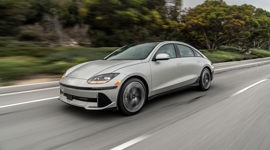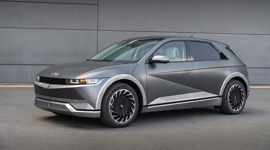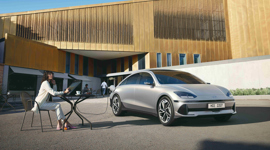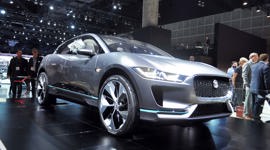Car designers are a detail-oriented bunch; sweating the small stuff sort of comes with the job.
But those details aren’t always as sensible as the ones that make up the 2023 Hyundai Ioniq 6, an electric vehicle (EV) that was designed to be as slippery as possible in order to maximize how far it can drive on a single charge. It’s the reason this sedan is shaped the way it is, but beyond the basics is an assortment of small but equally important details that contribute to outstanding aerodynamic efficiency.
According to Hyundai Style Group boss Simon Loasby, aspirations were aimed high in the early days of the design process; he even wore a custom t-shirt with a lofty target silk-screened on the chest: 0.1X – as in the drag coefficient he hoped they could get to with this new EV.

“Everyone said, ‘You must be mad – we’ll never hit that target,’” Loasby said during a design walk-around during the Los Angeles auto show. “I said, ‘I know we won’t hit that target, but let’s give ourselves a goal.’”
Such aerodynamic efficiency isn’t easily achieved. And while the team didn’t quite get there, the 0.22 coefficient of drag that it ended up with is impressive nonetheless. (It’s actually 0.21 in other parts of the world, where camera-based door mirrors further reduce drag.) There aren’t many production cars to ever do better.
To get there, designers first started with a stretched wheelbase of 2,950 mm (116 in) – longer than most sedans this size, not to mention the initial plan for this project. From there, they settled on the Ioniq 6’s signature single-curve silhouette. The long and low boattail around back was stretched to just about the limits allowed by the production line itself, according to Loasby.
“At the rear of the car, what you’re trying to do is create the smallest cross-sectional area where the flow detaches,” he said. “Literally, that’s the issue with the length: we can only fit certain length cars down the production line.”
From there, the focus shifted to sorting through the minutiae to maximize the ease with which the sedan would slip through the air. Of course, there’s a nearly flat underbody afforded by this EV’s simplified drivetrain; there’s also a pair of grille shutters up front that stay closed except to open occasionally for cooling the electric components. But that stuff’s not exactly unique.
Where the stylists’ work with the wind tunnel team can be best appreciated is in all the nooks and crannies that might otherwise be ignored. For example, the front wheel arches feature so-called “wheel gap reducers” that push air out and around two major sources of drag: the spinning wheels and tires.
Around back, the downturned winglets on the ends of the upper spoiler reduce subtle vortex that would otherwise be generated. According to Loasby, even the overall shape of the spoiler was influenced by aerodynamics more than it was aesthetics.
“We wanted a really flat spoiler like the Prophecy (concept) car, and the aero guys said it works but we need a little bit of curvature … because that’s where you need to separate the airflow,” he said, noting the aerospace-inspired curve that can be seen from below and above.
It’s not all about function, however, and the Hyundai team came up with plenty of purely aesthetic elements that look like they do for the sake of it. The pixel theme that carries over from the Ioniq 5 hatchback has a sort of past-meets-future flair, and it’s everywhere. Not only does it create cohesion between two cars that bear absolutely no family resemblance otherwise, but it’s just plain cool.
The look carries across the exterior and throughout the interior, with more than 700 of the simple parametric squares put to use here. Even then, some of them have jobs that extend beyond style. Take the quartet of pixels on the centre of the steering wheel; they’re lighted to indicate state of charge or voice command functionality. Likewise, the signal lights on the door mirrors are made of pixels instead of one large lens on each.
Another way in which the Ioniq 6’s design process was decidedly different than usual was the way the interior and exterior teams worked in tandem. It’s not that the two sides are often entirely segregated, but rather that the cabin usually comes after the look of the outside has largely been taken care of.
Not here, according to Loasby, with the entire car styled simultaneously so there were no surprises. It led to a more holistic look overall, with the space inside maximized to great effect. It’s the same sort of open and airy aesthetic introduced in the Ioniq 5, although the cabin is entirely unique to this sedan model. It’s also modernized to include semi-transparent elements on the door pockets, for instance, that not only lead to a sense of spaciousness but provide a peek at what might be tucked inside.

There’s also a whole host of sustainable materials available throughout the cabin, from carpet made of recycled fishing net to upholstery made of reprocessed polyethylene terephthalate (PET) bottles. It’s part of “emotional efficiency” and “ethical uniqueness” approaches to the development of the 2023 Hyundai Ioniq 6 where a series of small details add up to major differences.
